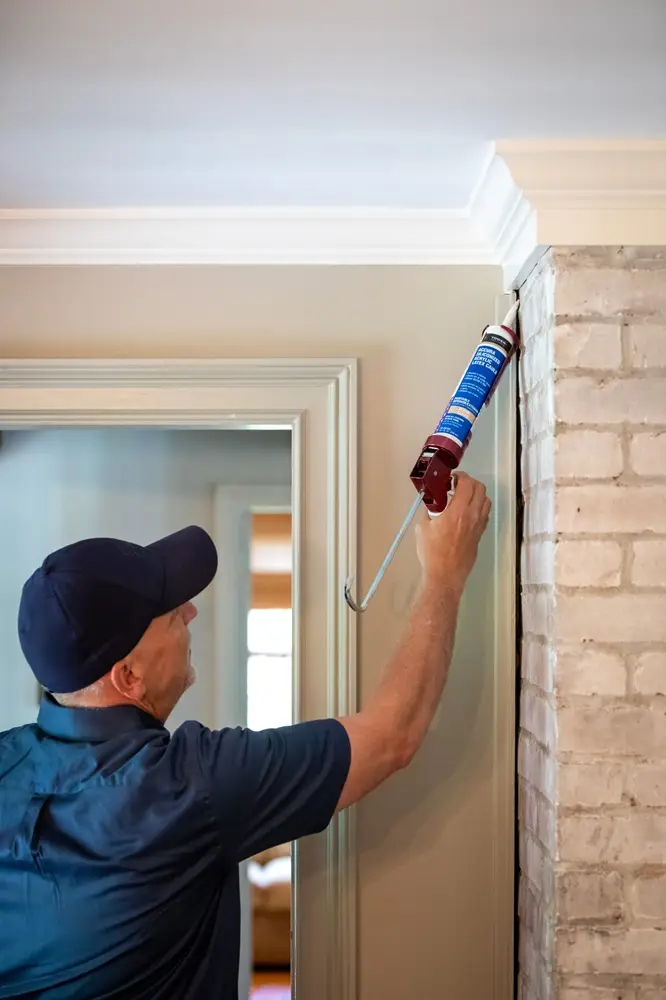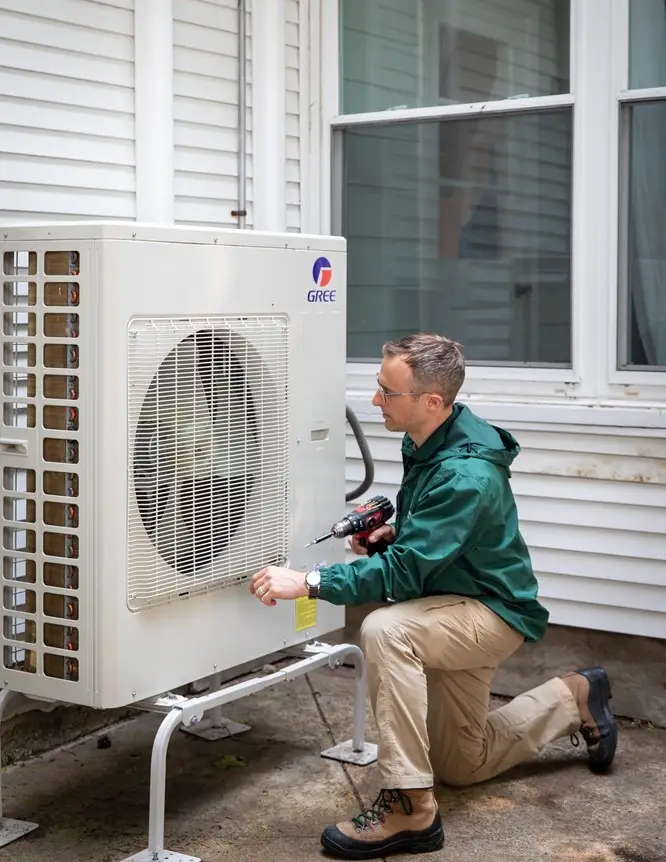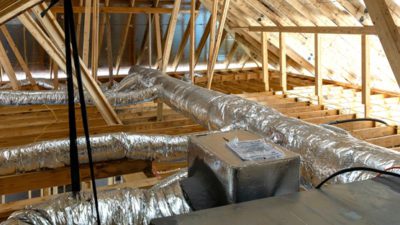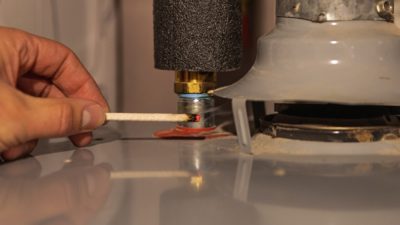If you’re a Massachusetts resident looking to cut energy costs, boost home comfort, and reduce your carbon footprint in 2025, the Mass Save® program has some major perks you’ll want to take advantage of. At HomeWorks Energy, we help residents like you access no-cost energy assessments and high-value rebates and incentives on energy-saving upgrades. Here are the top five retrofits we recommend this year that deliver the most bang for your buck.
You may qualify for generous incentives through Mass Save! Start with a No-Cost Mass Save Home Energy Assessment to find out which incentives you’re eligible for.
1. Air Sealing – The Unsung Hero of Energy Efficiency

Pro tip: Mass Save covers 100% of the cost of sealing air leaks for eligible homes, so it’s a no-brainer starting point!
Air sealing is the process of identifying and closing unintended gaps, cracks, and openings in your home’s building envelope—places where conditioned air can leak out and unconditioned air can seep in. Common leak sites are found around windows and doors, attic hatches, recessed lighting fixtures, plumbing and wiring penetrations, and ductwork. By applying caulk, weather-stripping, spray-foam sealants, and specialized gaskets, air sealing creates a tighter seal for your home, reducing drafts and moisture intrusion while improving the overall durability of your structure.

When your home is properly air sealed, your heating, ventilation, and air-conditioning systems don’t have to fight the constant infiltration of summer heat and frigid winter temperatures. This means your air conditioner or furnace runs less often and for shorter cycles, slashing monthly energy costs by as much as 10-20%.
A tighter envelope also helps maintain consistent indoor temperatures from room to room, enhancing comfort and reducing wear on mechanical equipment. Moreover, by limiting unfiltered outdoor air from entering, air sealing can improve indoor air quality, keeping out dust, pollen, and other allergens.
Beyond immediate energy savings, air sealing lays the groundwork for more advanced efficiency upgrades. Once gaps are closed, it becomes easier to insulate effectively—whether you’re adding attic batts or insulating exterior walls—since insulation performs best when it isn’t exposed to drafts. Mass Save recognizes this synergy, offering no-cost air sealing as a first step toward full-home weatherization. In this way, air sealing not only delivers rapid payback through lower utility bills but also unlocks deeper long-term savings and improved comfort when combined with other retrofits.
Cost to you: Often no cost for eligible homes after a Home Energy Assessment
Mass Save Incentive: 100% covered for eligible homes
Leaks around windows, doors, and ducts let expensive, heated or cooled air slip out, driving up your energy bills. During your no-cost Home Energy Assessment, we identify and seal those hidden air leaks using Mass Save-approved methods. Not only does this make your home more comfortable, but it also reduces energy waste all year long.
2. Attic Insulation – Keep Your Comfort from Floating Away
Attic insulation is the layer of material—often fiberglass batts, blown-in cellulose, or spray foam—installed between your living space and the attic above. Its primary role is to slow the flow of heat: In the winter, it keeps warm air from rising into the unheated attic; in the summer, it prevents scorching roof heat from penetrating downward. Proper attic insulation creates an effective thermal barrier, measured in R‑value, that resists conductive heat transfer. The higher the R‑value, the better your home retains conditioned air, reducing the workload on your heating and cooling system.
By minimizing heat loss through the roof, attic insulation can cut your heating and cooling energy use dramatically—often by 10-20%, depending on climate and the level of existing insulation. When your HVAC doesn’t have to compensate for continuous temperature drift through the attic, it cycles less frequently and operates more efficiently. This translates directly into lower utility bills: Less fuel or electricity consumed means real savings each month. On top of that, consistent indoor temperatures improve comfort, reducing cold floors in winter and overheated rooms in summer.
Attic insulation also unlocks deeper efficiency gains when paired with air sealing and other weatherization measures. Sealing cracks, gaps, and penetrations first ensures that insulation isn’t bypassed by air leaks, allowing the full R‑value to perform as intended. Mass Save recognizes this synergy and offers incentives for both comprehensive attic insulation and air sealing upgrades. The result is a faster payback: Your upfront investment is offset by lower energy costs over a few years, and you gain a quieter, more comfortable home year‑round. Your comfort quite literally won’t float away.
Cost to you: Significantly discounted for eligible homes
Mass Save Rebate: 75–100% off for recommended insulation
Your attic can be a major source of heat loss. In the winter, warm air rises and escapes if your insulation is outdated or underperforming. When HomeWorks Energy upgrades your attic insulation, you can expect a noticeable difference in comfort and big savings on heating costs.
3. Heat Pump Maintenance and Tune-Ups – Maximize Efficiency
A heat pump is an all-in-one heating and cooling system that moves heat rather than generating it by combustion. In heating mode, it extracts warmth from outdoor air (or the ground, in geothermal systems) and delivers it indoors. In cooling mode, the cycle reverses, pulling heat out of your living space and releasing it outside. Because a heat pump simply transfers heat rather than producing it via burning fuel, it can operate at 200–400% efficiency, meaning you get two to four times more energy in heating or cooling than the electricity you consume. To sustain those high efficiencies, regular maintenance and tune-ups are essential.
Daily and Monthly Checks – While most systems don’t require extensive day-to-day tasks, simple visual inspections make a big difference. Keep outdoor units free of leaves, sticks, snow, and other debris that can block airflow. Ensure that indoor vents and registers are unobstructed and clean. Blocked vents force the system to work harder and can lead to uneven heating and cooling. Every month or so, replace or clean the air filter according to the manufacturer’s recommendations. Clogged filters impede airflow, reduce efficiency, and can cause the compressor to overheat.
Quarterly Maintenance – Every three months, schedule a quick check of key components. Inspect refrigerant lines and insulation on the outdoor unit for signs of wear or damage. Wipe down fan blades and coils if they’ve accumulated dust or dirt using a soft brush or coil cleaner.
Test the thermostat to confirm accurate temperature control and programmable schedules. If your heat pump is paired with a supplemental electric strip or backup heat, verify that it transitions properly in cold weather. Quarterly attention keeps minor issues from snowballing into performance-draining defects.

Annual Tune-Up – Once a year, ideally in spring for cooling systems and fall for heating, have a qualified HVAC technician perform a full tune-up. This service typically includes checking and adjusting refrigerant charge, testing electrical connections and controls, lubricating moving parts, measuring airflow and temperature differentials, cleaning both indoor and outdoor coils, and verifying defrost and safety cycles. A professional tune-up can restore lost capacity, catch refrigerant leaks, and optimize system settings, often recouping the cost of service in a single season’s worth of energy savings.
By keeping filters clean, airflow unobstructed, and refrigerant and mechanical components in top shape, you preserve the high Coefficient of Performance (COP) that makes heat pumps so efficient. Well-maintained heat pumps run fewer cycles to reach your set temperatures, reducing wear on the compressor and cutting electrical use.
Over a year of consistent tune-ups and preventive care, homeowners often see 10–20% better system efficiency—and corresponding reductions in heating and cooling bills—compared to neglected systems. In other words, investing in maintenance doesn’t just prolong equipment life; it maximizes your energy savings.
Already using a heat pump for heating and cooling? Great choice! But just like any system, it needs proper maintenance to perform at its best. HomeWorks Energy can perform tune-ups that improve efficiency, extend system life, and help you stay comfortable through all seasons.
4. Programmable Smart Thermostats – Smarter Savings

Did you know? HomeWorks Energy can install select thermostats at no cost as part of your assessment.
Programmable thermostats let you set a fixed schedule for your heating and cooling systems. For summer, think, “Wake up at 6:30 AM: 72°F,” “Leave at 8:00 AM: 78°F,” “Return at 5:30 PM: 72°F,” and “Go to bed at 10:00 PM: 70°F.”
Once you program the daily or weekly schedule, the thermostat automatically adjusts temperature setpoints without you having to touch it. This hands-off control prevents energy waste from conditioning an empty home or overheating rooms at night. Studies show that even modest setbacks—lowering the heat by 7–10°F for eight hours a day—can save around 10% on your heating bill each year.
Smart thermostats take scheduling a step further by using Wi-Fi connectivity, sensors, and learning algorithms. Devices from brands like Nest, ecobee, and Honeywell learn your habits, like when you’re away, your overnight routine, and temperature preferences, and adapt automatically. They can also pull in local weather data to pre-heat or cool your home before extreme conditions hit. Beyond self-learning, smart thermostats offer remote control via smartphone apps, energy-use reports, and alerts if something’s amiss (for example, HVAC runtimes or filter-change reminders). This granular insight empowers homeowners to fine-tune comfort and efficiency in real time.
The efficiency gains come from reducing unnecessary runtime and optimizing cycle lengths. By avoiding heating or cooling when no one’s home and minimizing temperature swings, both thermostat types lighten the load on your HVAC system, leading to shorter, less frequent cycles. Smart thermostats can even “geofence” your home, detecting when your phone leaves the property and automatically initiating an energy-saving setback. Over a year, these smarter controls can cut both heating and cooling energy by 10–15%, translating directly into lower utility costs.
To get the most from your programmable or smart thermostat, follow these best practices:
- Use sensible setbacks: In winter, aim for 60–62°F when away; in summer, set back to 78–80°F.
- Avoid overprogramming: Too many small temperature changes can confuse HVAC zoning and reduce efficiency—stick to 3–4 schedule points per day.
- Leverage geo-awareness: If your device supports it, enable presence detection so the thermostat knows when you’re coming and going without manual overrides.
- Review reports: Check monthly energy-use reports to spot patterns. If you consistently override the settings, adjust your schedule.
- Respond to alerts: Don’t ignore filter-change notifications; a clean filter keeps airflow high and consumption low.
By combining thoughtful scheduling, adaptive learning, and real-time feedback, programmable and smart thermostats make your home both comfortable and energy-efficient, saving you time, money, and needless HVAC wear.
Cost to you: Select thermostats are often offered at no cost for eligible homes
Mass Save: Included in a no-cost Home Energy Assessment for eligible homes.
Smart thermostats let you control your home’s temperature from your phone and help reduce energy use while you’re away. If you’re still using an old, manual thermostat, upgrading to a programmable or smart model is a small change that makes a big difference.
5. High-Efficiency Heating and Cooling Upgrades – Big Rebates, Big Impact

Ask us about the 0% interest Mass Save HEAT Loan to help cover out-of-pocket costs.
For homes without ductwork or for those who want room-by-room control, ductless mini-split heat pumps are an ideal upgrade. These slim, indoor wall units connect to an outdoor condenser and use inverter technology to ramp up or down, precisely matching the heating or cooling load and avoiding the waste of on/off cycling. Portable electric heaters and window-mounted ACs can also be replaced with “portable” heat pump units (sometimes called “plug-in mini-splits”), which deliver both heating and cooling far more efficiently than resistance coils or single-speed window units. Even in apartments or older homes, these systems can reduce energy use by 25–50% versus baseboard heaters or window air conditioners.
Beyond swapping equipment, existing systems benefit greatly from simple efficiency upgrades. If you have a gas or oil furnace, installing a new, variable-speed ECM blower motor can improve airflow and lower fan energy use by up to 50%. Retrofitting your ductwork (e.g., sealing leaks, adding insulation, and resizing trunks) reduces distribution losses that can amount to 10–20% of your HVAC load. In older homes with radiators, adding thermostatic radiator valves gives you precise, room-by-room temperature control, cutting fuel use in under-occupied areas. And regardless of system type, adding a programmable or smart thermostat helps ensure you’re only heating or cooling when needed.
The Mass Save program currently offers robust incentives to make these upgrades affordable. Rebates for qualifying air-source heat pumps and cold-climate models cover up to $10,000, and you can stack those with the zero-interest HEAT Loan for systems, insulation, and windows. On top of state incentives, the federal Inflation Reduction Act provides a 30% tax credit on many electrification upgrades (including heat pumps and heat pump water heaters), up to specified caps. Even ECM motors and smart thermostats can be claimed under the IRA’s home energy credit. Together, these rebates and credits can turn a major HVAC retrofit into a cost-neutral investment that slashes your energy bills, enhances comfort, and helps Massachusetts meet its clean-energy goals.
Cost to you: Significantly reduced with rebates for eligible homes
Mass Save Rebate: Up to $10,000 for heat pumps
Thinking about upgrading your old furnace or AC? 2025 is a great year to do it. HomeWorks Energy can help you replace aging systems with high-efficiency air source heat pumps, mini-splits, or high-efficiency furnaces, and may help you qualify for thousands in Mass Save rebates.

Massachusetts residents have a range of high-efficiency heating and cooling upgrades at their fingertips—each offering both comfort improvements and significant energy savings. If you have a traditional central air conditioner, upgrading to a high-SEER (Seasonal Energy Efficiency Ratio) model with a variable-speed compressor can reduce cooling electricity use by 20–30%. Modern heat pumps (air-source or cold-climate models) go even further: They provide heating and cooling in one unit at up to 300–400% efficiency, compared to the 60–90% efficiency of a standard gas furnace or electric baseboard. For oil- or propane-heated homes, switching to a cold-climate heat pump can cut heating energy use by more than half while still delivering reliable warmth, even on the chilliest New England days.
Ready to Start Saving?
Now is the time to take advantage of these powerful Mass Save incentives. Whether you’re looking to make small improvements or plan a full HVAC upgrade, the HomeWorks Energy team is here to guide you every step of the way.
Book your no-cost Home Energy Assessment today and find out which upgrades are right for your home in 2025.
HomeWorks Energy is a proud Mass Save partner helping thousands of Massachusetts residents increase their energy savings and live more comfortably. Let us help you next!





